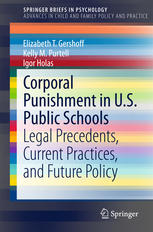

Most ebook files are in PDF format, so you can easily read them using various software such as Foxit Reader or directly on the Google Chrome browser.
Some ebook files are released by publishers in other formats such as .awz, .mobi, .epub, .fb2, etc. You may need to install specific software to read these formats on mobile/PC, such as Calibre.
Please read the tutorial at this link: https://ebookbell.com/faq
We offer FREE conversion to the popular formats you request; however, this may take some time. Therefore, right after payment, please email us, and we will try to provide the service as quickly as possible.
For some exceptional file formats or broken links (if any), please refrain from opening any disputes. Instead, email us first, and we will try to assist within a maximum of 6 hours.
EbookBell Team

0.0
0 reviewsThis Brief reviews the past, present, and future use of school corporal punishment in the United States, a practice that remains legal in 19 states as it is constitutionally permitted according to the U.S. Supreme Court. As a result of school corporal punishment, nearly 200,000 children are paddled in schools each year. Most Americans are unaware of this fact or the physical injuries sustained by countless school children who are hit with objects by school personnel in the name of discipline. Therefore, Corporal Punishment in U.S. Public Schools begins by summarizing the legal basis for school corporal punishment and trends in Americans’ attitudes about it. It then presents trends in the use of school corporal punishment in the United States over time to establish its past and current prevalence. It then discusses what is known about the effects of school corporal punishment on children, though with so little research on this topic, much of the relevant literature is focused on parents’ use of corporal punishment with their children. It also provides results from a policy analysis that examines the effect of state-level school corporal punishment bans on trends in juvenile crime. It concludes by discussing potential legal, policy, and advocacy avenues for abolition of school corporal punishment at the state and federal levels as well as summarizing how school corporal punishment is being used and what its potential implications are for thousands of individual students and for the society at large. As school corporal punishment becomes more and more regulated at the state level, Corporal Punishment in U.S. Public Schools serves an essential guide for policymakers and advocates across the country as well as for researchers, scientist-practitioners, and graduate students.